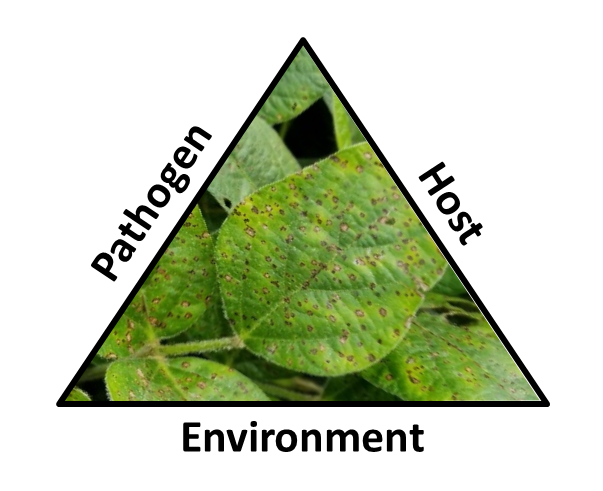Field work has progressed significantly in the past couple of weeks due to warmer temperatures.
Marcelo Zimmer


The warmer temperatures in the past couple of weeks have allowed winter wheat fields in Indiana to green up and resume growth.

We have been getting lots of inquiries lately about fields that didn’t get planted to a corn or soybean crop, and have lots of weeds growing in them.

Recently there has been a number of calls and samples submitted to the Purdue Plant Pest Diagnostic Lab (PPDL) worried that they have frogeye on soybean. I know due to the issues we saw at the end of last season there is a bit of concern about managing frogeye.
The Purdue Weed Science team is hosting an educational field day for farmers, agricultural industry professionals, Extension educators, consultants and others who apply herbicides.

There are many no-till fields across Indiana that have either not been burned down or those that will need to be sprayed again because of wet weather and planting delays.
Adoption of Xtend soybeans is expected to reach 70-80% of the soybean acres in the U.S. in 2019. The approval of Enlist E3 soybean imports by China and the Philippines earlier this year has allowed for full commercialization in the U.S. and provided farmers with another auxin herbicide (2,4-D choline) in their soybean weed management programs.

Every spring we receive several calls and e-mails about a certain 3-foot tall weed with yellow flowers. This year, cressleaf groundsel is slower to develop, presumably because of the extended cold and wet weather which has not allowed much field work (spring tillage or burndowns for no-till) to proceed.

We have received a few questions this winter and spring about ammonium sulfate (AMS) rates to use with postemergence herbicides and how much is needed to overcome hard water issues.
Wild garlic (Allium vineale) has shown up in many Indiana no-till corn and soybean fields this spring especially, in southern Indiana. Wild garlic is most troublesome in wheat, where aerial bulblets contaminate harvested grain and impart the garlic flavor into processed products such as wheat flower. Infestations in corn and soybean fields have less adverse effects on the crop, but can spread quickly across fields and are difficult to control with typical burndown treatments of glyphosate and 2,4-D. Management of wild garlic must occur early in the spring as this perennial will quickly become reproductive in mid to late spring. Wild garlic produces aerial bulblets and begins to senesce in late spring to early summer. As with all weeds, wild garlic management needs to occur prior to seed or in this case bulblet production to reduce future infestations. Ideally herbicide applications should take place in early April when the wild[Read More…]
© 2026 Purdue University | An equal access/equal opportunity university | Copyright Complaints | Maintained by Pest&Crop newsletter
If you have trouble accessing this page because of a disability, please contact Pest&Crop newsletter at luck@purdue.edu.


